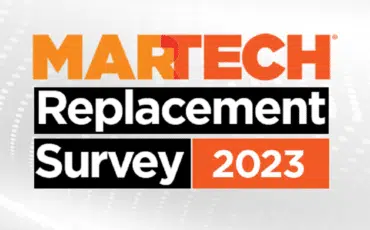How generative AI is improving customer experience and service calls
When the customer calls, AI is helping to solve problems, assist agents and improve the entire journey.
Generative AI and large language models are making customer experience platforms more accessible and humanized. These advances in recent months build on years of AI development that customer service and experience company NICE has put into their experience software.
The company unveiled generative AI use cases at this week’s NICE Interactions event in New York. Enlighten Actions and Enlighten Copilot use OpenAI generative models added to NICE’s AI-for-CX Enlighten platform.
“It makes applications broader and more easy to get to,” said Barry Cooper, president of NICE CX Division.
Using AI for customer service calls helps agents serve customers more efficiently. It also makes customer data available to inform experiences and actions across the customer journey.
“We started in service, but once you go to digital, you quickly go into ‘async’ (asynchronous communication),” said Cooper. “The moment you go to digital, async — WhatsApp and those kinds of things — the likelihood for an interaction to last for days, weeks, years is much greater. And then the likelihood of something that started as service to move to sales or other things is much greater because you have this open channel of communication [with the customer].”
Why we care. In the wave of new generative AI products and features for martech applications unleashed since OpenAI’s launch of ChatGPT, it’s easy to forget the history of chatbots in customer service. Marketers now look to use generative AI and large language models to help them navigate a CRM or ramp up production of marketing content across the entire marketing org. However, CX and customer service remain critical sources for getting to know customers better and retaining them with better experiences.
Enlighten Actions and Copilot features. NICE’s Enlighten AI offerings have already been on the market for three years; NICE’s CXone for eight years. By implementing these platforms, organizations move from having to manually spot-check customer service calls for quality and training to having 100% of customer interactions ready to be analyzed and acted on across the organization.
As a result of adding generative AI, Enlighten gives consumers access to self-service as effective as the best agents, Cooper said. And it gives call agents “super powers” by solving more customer issues quickly with easy-to-use dashboards that help generate solutions.
For instance, if a travel customer has a canceled flight (as many attendees in New York had with the Canadian wildfire smoke that fogged up the city), an agent would have hotels generated in their dashboard which they could then offer to book for the customer. And at the supervisor level, managers can easily spot trends and see that many customers in New York were having the same problem.
Generative web content. Enlighten Actions will also identify common problems and generate web articles and publish them automatically. They will be search engine optimized so that they come up as a top search in a search engine. These articles then serve as another self-help tool for customers who search on Google first instead of searching for clues on the company’s homepage or messaging a live agent or chatbot.
The end goal for these automatically-created articles is to help customers and cut down on call volume, but they have potential for broader content marketing uses.
Data payload. Generative AI helps make interactions more conversational, but the deep knowledge about customers comes from interactions with them through Enlighten and through knowledge within the organization.
“The payload is knowledge,” said Cooper. “We didn’t go to the Internet to get that knowledge, it doesn’t exist on the Internet. If you’re H&R Block, and [you create an article] ‘How to solve this tax issue’ it’s very specific and doesn’t exist on the Internet.”
The Enlighten platform applies AI to hundreds of stages in the customer journey that are mapped out in their previous and ongoing platform CXone. This means that marketers have an effective way to identify opportunities across the customer journey, based on what a customer shares during a conversation with an agent.
Additionally, marketers can draw on customer data elsewhere within their stack — from a CRM for instance — to add more context when a customer calls or messages.
Dig deeper: How CMOs should respond to ChatGPT’s marketing impact
Using call data to increase sales. A large company in entertainment uses a number of NICE CX solutions and was among the companies present at the New York conference.
The company was able to identify and measure trends in agent calls and improve strategies that led to sales. A system integration and development manager at the company was tasked with using the technology to improve the sales.
A full analysis of calls showed that when agents mentioned certain words to a customer during a call, this was more likely to lead to a sale. The company implemented an incentive structure not just for more sales, but for more mentions by the agents during calls. The company could then see the improvement of individual agents by having a running count of how many more times the agents said the magic words.
“We make sure that these are actions agents should be able to accomplish, but it’s a little bit of a stretch, so they can do it,” the manager said in a session at the conference. “And then we go into analyzing the performance and making adjustments, and this process keeps going over and over again.”
The advantage of using AI is that as processes repeat, the models get smarter and more insightful about the specific business that uses it.
Related stories
